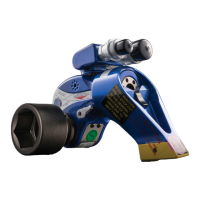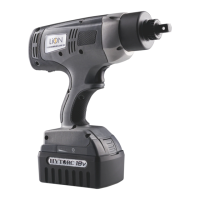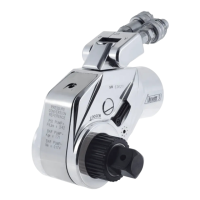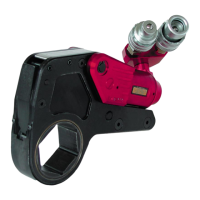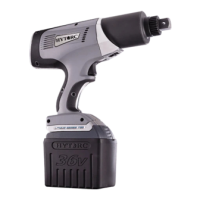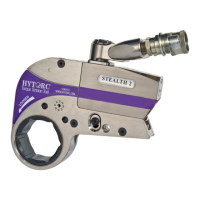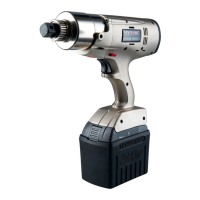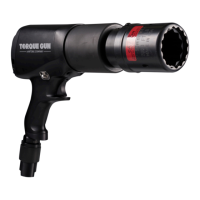32
Troubleshooting (Cont’d.)
10
SYMPTOM PROBABLE CAUSE REQUIRED ACTION
Cylinder/Tool leaks
1. Safety relief valve on swivel has lifted.
2. Blown O-ring in cylinder
3. Defective gland seal.
1A. Tighten all hose and couplers. If leak
continues, adjust safety setting - Test #4 (pg. 34)
1B. Check to see if the system is properly plumbed
by running test #5 (pg. 34) (high pressure on
retract side will lift the safety relief valve)
2. Replace O-Ring with proper high pressure
O-Ring. (Call for service)
3. Replace gland seal. (Call for service)
Tool operates backwards 1. Couplings reversed
2. Multiple hoses in even numbers
1. Run test #5. Re-Plumb system as necessary.
2. As plumbed, HYTORC hoses may only be
joined together in odd numbers ONLY. If it is
necessary to use 2,4,6 hoses - make an adapter
from spare high pressure couplings and nipples.
Ratchet returns with retract stroke
1. Broken or otherwise inoperable drive
segment.
1. Replace drive segment and/or spring. (Call
for service)
Ratchet will not take successive
strokes
1. Broken or otherwise inoperative drive
segment I or spring
2. Cylinder not retracting completely
3. Linkage between piston rod and drive
plates is broken
1. Replace drive segment and/or spring. (Call
for service)
2. Remove tool from nut and cycle freely for
several strokes. If problem persists, check pawls.
2A. Operator not allowing adequate time for
cylinder to retract fully.
3. Replace parts as necessary - (Call for service)
Tool locks onto nut
1. Drive segment is loaded when the
tool is maxed out in torque
2. Tool is operating backwards
3. Tool is wedged under a fixed object
1. Press advance button on remote and build
pressure - continue to press down on remote while
pulling back on one of the accuracy assurance
levers - release remote while continuing to hold
back on levers
2. Push advance button down - tool should
immediately fall free- Run test #5 (pg. 34)
3. Remove shroud from around ratchet. Using
any tool available, pry the drive segment out of
the ratchet and at the same time pull back on the
accuracy assurance levers. Tool should swing free
or burn away the socket or obstruction.
(Continued on following page.)
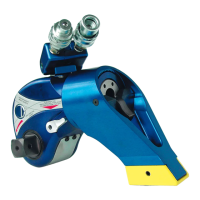
